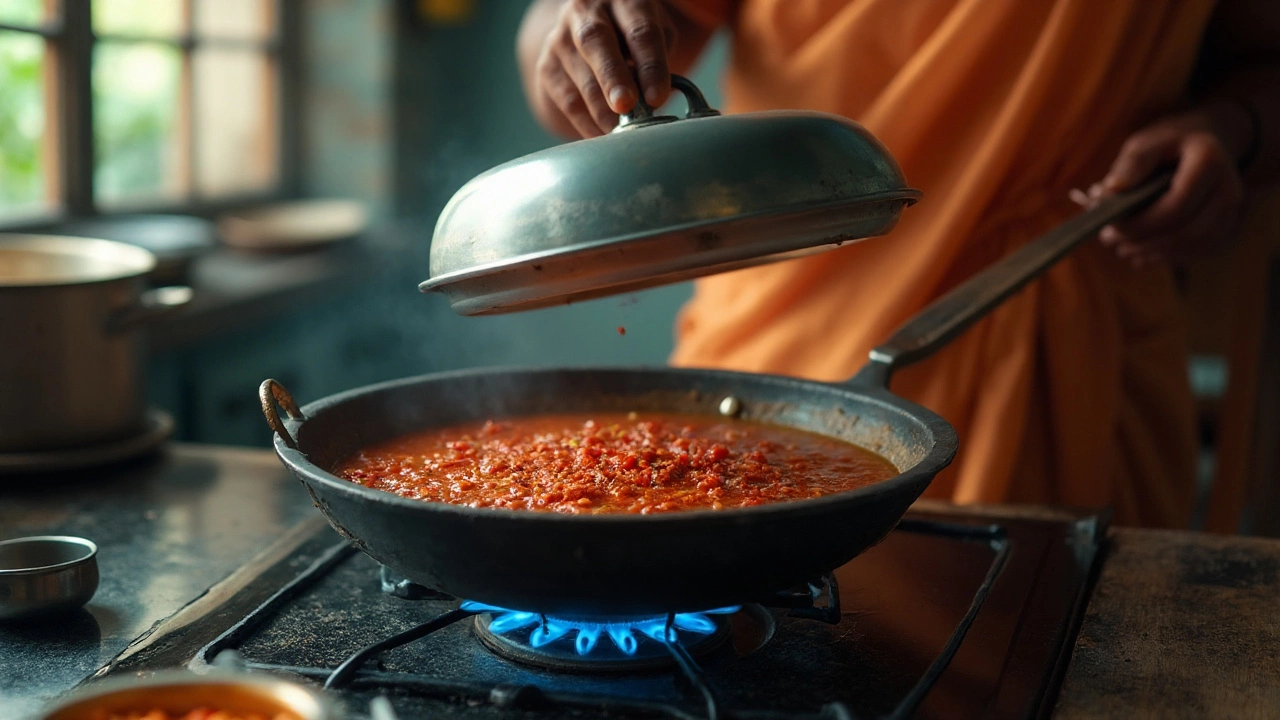Coconut Chutney Tempering: Boost Flavor in a Flash
When working with Coconut Chutney Tempering, a technique where hot oil and spices are poured over fresh coconut chutney. Also known as tadka, it creates a fragrant, textured finish that turns a simple side into a flavor powerhouse, you instantly upgrade a breakfast plate, a snack, or a dinner side. The sizzling pour brings out hidden aromas, adds a crunchy bite, and ties the chutney to the rest of the meal.
Why Tempering Matters for Coconut Chutney
Tempering isn’t just a garnish; it’s a chemistry lesson in everyday cooking. The hot oil activates the essential oils in mustard seeds, tiny brown seeds that pop and release a nutty flavor when heated. Those popped seeds then mingle with curry leaves, fragrant leaves that turn bright and citrusy once they hit the pan. Finally, a splash of coconut oil, a mildly sweet oil that pairs perfectly with the coconut base of the chutney carries everything onto the surface. In short, coconut chutney tempering brings three core actions together: popping, scent‑release, and flavor‑binding.
Most South Indian breakfasts—dosa, idli, vada—depend on that final drizzle for balance. Without tempering, the chutney can taste flat, even if the coconut, green chilies, and roasted lentils are spot on. Add the hot‑oil splash, and you get a layered bite: cool, creamy chutney topped with warm, crunchy spice bits.
Because the process is quick, timing is everything. You want the oil hot enough to pop the mustard seeds but not smoking, which would turn the flavor bitter. A good rule of thumb: when a drop of water sizzles instantly, you’re ready. Toss in the curry leaves right after the mustard seeds—they’ll curl in a few seconds, releasing their aroma without burning.
Variations are endless. Some cooks swap mustard seeds for cumin or add dried red chilies for heat. Others finish with a pinch of asafoetida (hing) for an umami kick. The core idea stays the same: a brief, high‑heat dance that locks flavor into the chutney.
Health‑wise, the tempering adds beneficial fats from the oil and antioxidants from the spices. Mustard seeds contain selenium and magnesium; curry leaves are rich in vitamin C and iron. So you’re not just adding taste—you’re boosting nutrition.
Common mistakes? Using cold oil kills the popping action, while using too much oil can drown the chutney’s fresh taste. Also, avoid over‑cooking the curry leaves; they turn black and taste burnt. A quick pop, a brief sizzle, and you’re set.
Pairing tips: drizzle the tempering evenly over a bowl of chutney, then give it a gentle stir so the spices coat every bite. Serve alongside crisp dosas, fluffy idlis, or even as a dip for steamed veggies. The contrast between the hot oil and cool chutney is what makes the dish memorable.
Now that you know why the technique works, what you need, and how to avoid slip‑ups, the next step is to see real‑world examples. Below you’ll find a curated collection of articles that dive deeper into each ingredient, walk you through the exact steps, and share shortcuts for busy kitchens. Explore the range, pick the tips that fit your style, and start mastering coconut chutney tempering today.
Do You Cook Chutney Covered or Uncovered? Lid-On vs. Lid-Off Guide
Chutney lid on or off? Quick rules for fresh herb, coconut, tomato, and fruit chutneys. When to cover, when to vent, how to reduce, and how to avoid watery or dull chutney.
Read more